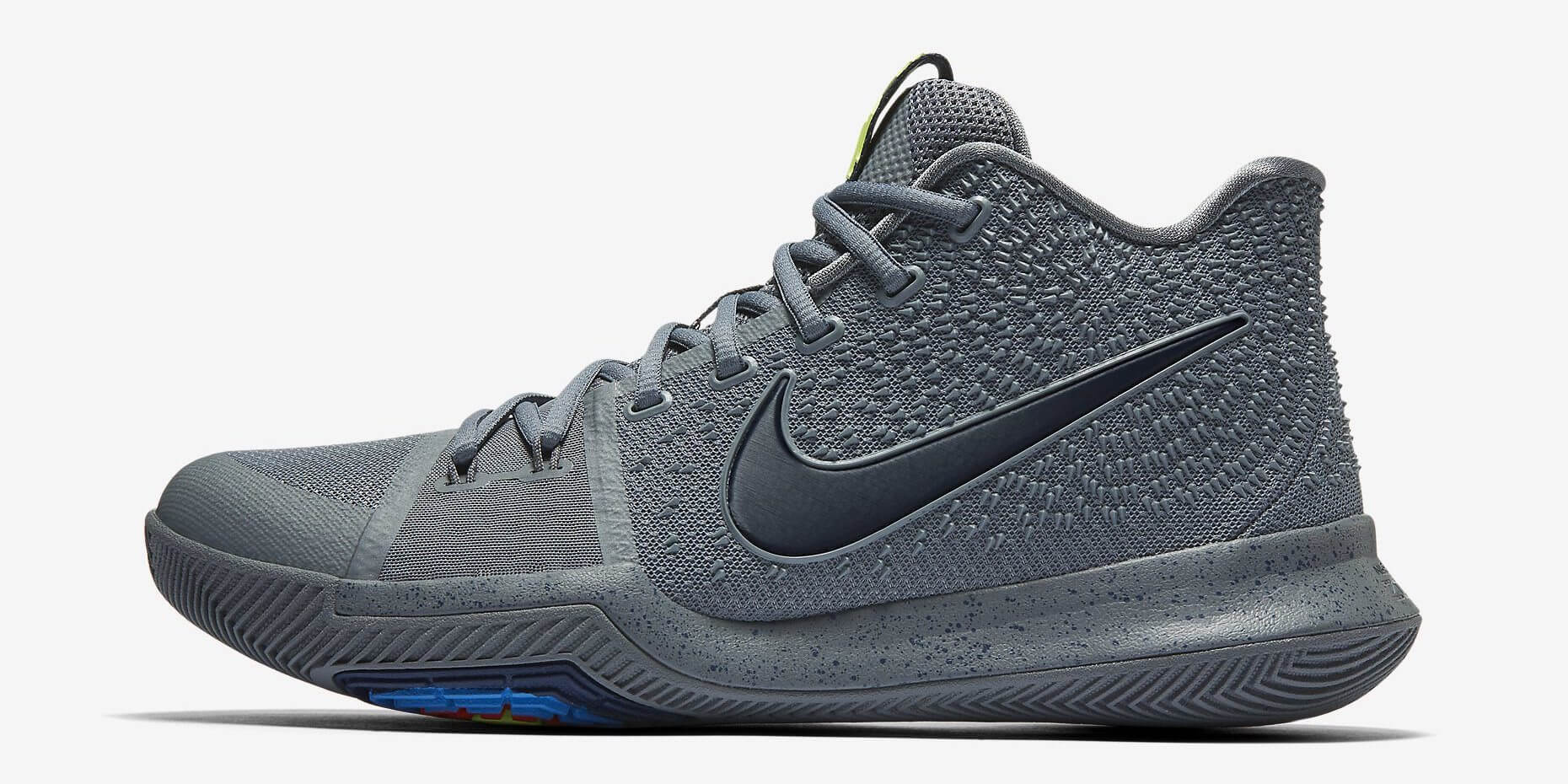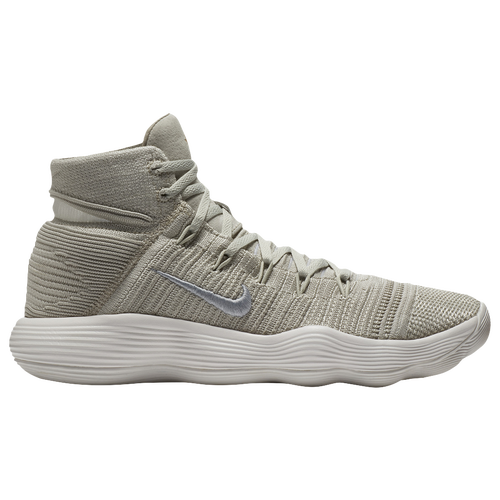The 10 Best Basketball Shoes – How to Find Your Perfect Pair
Picking your next pair of basketball shoes can be a pretty laborious process. Finding out about the latest releases, reading reviews, checking prices and getting the right size – it would often take me days or even weeks to settle on a new pair. Now, maybe I am just a lot pickier than most when it comes to basketball sneakers, but there is a reason why!
Good basketball shoes are important because:
- They stick to the floor and allow quick cuts and crossovers
- They provide impact protection to relieve the pressure on your knees and feet
- They fit comfortably and ensure perfect lockdown
- They support your feet and protect your ankles from rolling
In short: Good basketball shoes will help you to get the most out of your game!
In this article, I want to help you find the best possible basketball shoes for your style of game. I will show you which type of shoe is best for your position, how to pick out shoes with great traction and sufficient cushioning and how you can make sure to get the right size – even when ordering online. But first, let’s take a quick look at the top 10 basketball shoes which are currently on the market:
List of the 10 Best Basketball Shoes
- Excellent cushioning
- Sock-like fit
- Affordable price
- Great court feel
- Amazing Traction
- Great Cushioning
- Great Traction
- Very responsive shoe
- Premium Materials
- Very good all-around performance
- Very comfortable cushioning
- Snug fit
- material quality
- only $110
- Bounce Cushioning works well
- Fair price
- Amazing traction
- Nice materials
- amazing traction
- very comfortable
The list above shows the top 10 basketball shoes according to the most well-respected shoe reviewers on the web as of Nov 16, 2017.
I have created a large shoe database where every honest shoe review is recorded and used to calculate average overall ratings as well as scores for the traction, cushion and other characteristics of the shoes. You can see the complete list of all rated basketball shoes here. For this article, only shoes that got reviewed by at least 4 shoe critics were taken into consideration.
The list above is a great way to find basketball shoes that perform well overall, but not every basketball shoe will work the same for different types of players. Quick guards will need different shoes than big and heavy centers. But how do you know what kind of shoe you need? In the following paragraphs, I want to go into more detail and tell you what to look for to find your perfect fit!
How to find the best basketball shoe that fits your playing style
Let’s talk about the most important characteristics of basketball kicks and what you want to look for when you are in the market for a new pair:
Style of the silhouette
There are three different styles of basketball shoes out there: Low tops, mid tops, and high tops. Traditionally, basketball players used to play in high tops that completely covered the ankle of players, but nowadays, more and more players are wearing low-tops that look more like regular training shoes. Let’s take a closer look at each style and their pros and cons:
Low Tops:
These shoes provide maximum flexibility and are often very lightweight. Perfect for guards who don’t want to add unnecessary bulk to their feet, and want to feel light and quick on their feet. Bigger and slower guys don’t profit as much from low tops and might look for the protection of higher cut shoes.

The Kobe Line popularised Low Tops
Mid Tops:
Mid Tops are a hybrid between low- and high tops and provide a little bit of both worlds: Good flexibility and mobility, but also a decent amount of ankle protection and more stability. Perfect for forwards or wings who don’t need all the flexibility of a low top, but also don’t like the bulkiness of true high tops.

Mid Tops provide the best of two worlds
High Tops:
This is the way basketball shoes used to look like for decades. High Tops provide a lot of ankle protection, support and are often nicely cushioned. Perfect for big guys who are looking for maximum protection when they are fighting below the rim and don’t mind losing a little bit of flexibility in exchange for more safety.

High Tops are perfect for big guys
Traction
If you plan to do explosive crossovers and quick cuts you need a shoe that provides excellent traction. Nothing is more annoying than slipping out whenever you try to change directions or need to defend a shifty opponent.
The amount of traction provided by a shoe relies on two factors: the traction pattern and the rubber compound used in the outer sole.
Traction pattern:
A very popular traction pattern that is often used in basketball shoes is the “herringbone”. Zig-zag lines of rubber provide grip in every direction and the empty space in between the rubber makes sure that dust doesn’t stick to the surface of the sole.
Herringbone traction almost always works; unfortunately, other traction patterns are often hit or miss. Sometimes designers try to get too innovative or focus on storytelling, and you end up with a shoe that needs endless wiping or feels like playing on skates.

Herringbone traction pattern of the Kobe 8
Rubber Compound:
The quality of the rubber compound is much harder to judge than the traction pattern. Softer rubber will often work better indoors but attract a lot of dust, hard rubber is a lot more durable but doesn’t provide the same grip on pristine hardwood courts. As a rule of thumb, if you have the option between colorways with translucent and solid outer soles, always go with the solid option. A solid rubber outer sole might not look as nice, but if often performs much better especially on dusty courts.
Cushion
The cushioning of a basketball shoe becomes more the important the heavier you are. If you are a 5’6″ guard who weighs 140 lbs, you won’t need a lot of cushioning, and you will probably prefer the responsiveness and court feel of a firmer setup. But bigger and heavier guys put a lot of pressure on their joints and profit immensely from a softer and more forgiving cushioning.
There are countless cushioning technologies on the market, and every company has different styles for different use cases or budgets. The most popular tech is probably Nike Zoom Air cushioning which consists of plastic bags filled with pressurized air that are embedded in the midsole. Other cushioning setups like Adidas Bounce, Nike Lunarlon or UnderArmour MicroG are foam based and provide impact protection by distributing impact forces more evenly.
Other than traction, cushioning really comes down to personal preference. If you are a quick and light guard, you want to look for a firm cushioning setup like Nike Lunarlon or Adidas Bounce. Cushioning that is too soft will only make you lose court feel and responsiveness.
However, if you are a bigger player or you have a history of knee problems, you will fair much better with a more comfortable cushioning like full-length Zoom Air or Adidas Boost.
Support
If you think of supportive basketball shoes, you probably imagine a bulky high top with a lot of straps and laces. Fortunately, modern basketball shoes have found other way to provides athletes with the necessary safety and stability. Just look at the shoes which are worn in the NBA today – a lot of players wear low tops that were unimaginable only 20 years ago.
A common support feature used in almost every modern basketball shoe is the outrigger. Usually placed on the lateral side of the shoe, this extension of the outer sole makes the base of the shoe wider and provides a stable base that protects your feet from rolling.
Other often used support features are midfoot shanks that provide torsional support and heel counters that lock you into the shoe. But one of the most significant support factors is the fit and lockdown of a shoe. All the support features in the world will not help you if you are sliding side-to-side on every cut because your sneakers are just too wide.
If you are recovering from an ankle injury and need even more support around the ankle, you should look into getting an additional ankle brace.
Fit
The fit is one of the most important things to consider when buying new shoes. You want to be firmly locked in and not sliding left-to-right or front-to-back at all. If you can, it’s always a good idea to try shoes in a store. If that’s not an option, I like to get shoes in two different sizes, keep the better fitting pair and use the return policy for the other one.
If shoes are a little tight in the beginning that’s okay, they usually widen and become more comfortable as you break them in. If you are unsure which size to get, or you have unusually wide or narrow feet and you are looking for a particular fit, then check out this list of shoes. You can filter shoes to only include narrow-, or wide-fitting shoes, and find out which model runs large or small by reading the more detailed review.
Materials
There is a wide variety of upper materials used in basketball shoes these days. From traditional nubuck leather, over synthetic mesh to high-tech textile materials like Adidas PrimeKnit or Nike Flyknit.
Cheaper materials like Mesh or other synthetic uppers often start out rather stiff and need a little time to break in. High-tech materials are often reserved for more expensive signature lines like Air Jordan’s or Kobes and are really soft and comfortable from the beginning.
Aside from aesthetics and comfort, modern materials used in basketball shoes all do a very nice job and don’t differ too much when it comes to performance. Just pick whatever material you personally prefer and can afford.
Now, that we have discussed what you want to look for when buying a new pair of sneakers, let’s see the best currently available basketball shoes ranked from top to bottom by average critic rating score.
A closer look at the top 10 Basketball Shoes




















